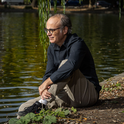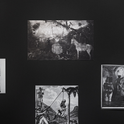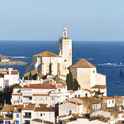For a man who has had “a very busy year”, Gabriele Finaldi is remarkably poised when we meet in his modern office nestled behind thousands of years of priceless masterpieces. As director of the National Gallery in London, Finaldi has overseen celebrations and renovations to mark the museum’s 200th anniversary. Alongside a rehang of the permanent collection—which comprises more than 2,300 works by artists including Michelangelo, Rembrandt, Turner and Van Gogh—the gallery’s Sainsbury Wing, home to its early Renaissance paintings, reopened in May after two years. At the same time, the institution that welcomed more than 3.2m visitors in 2024 has sought go out into the world, with tours of pictures across the UK and Asia and a new digital “imaginarium”. “From my point of view it’s been very, very successful and thrilling in many ways,” Finaldi tells me, noting that the bicentenary will officially draw to a close in July, when Trafalgar Square will play host to British artist Jeremy Deller for a live performance and parade, The Triumph of Art. “I think pretty much everything that we set out to do, we’ve done.”
Finaldi, 59, knows his place of work well: at the helm since 2015, he was the curator responsible for its Spanish collection between 1992 and 2002, before he swapped London for Madrid to become deputy director of collections and research at the Prado museum. As he sees it, the events of the past year are a continuation of the “forward-looking” approach of the gallery in the 1990s, when the Sainsbury Wing had just opened and there was “a lot of interest in how it was making the Old Masters fascinating for a new generation”. “I’ve tried to bring back some of the energy and dynamism of the Prado,” he adds, citing the series of international shows, big acquisitions and launch of a research centre during his time at the Madrid museum. “I am very much a curator-director.”
Finaldi is hopeful that Keir Starmer’s “reset” deal with the European Union will make it easier to recruit abroad and strengthen the gallery’s “international character”, which he views as its “fundamental characteristic”. But one difference from the continent that he is keen to see preserved is the National Gallery’s status as an arm’s-length body of the Department for Culture, Media and Sport. The tie to the state—which is shared by other “national” museums such as the Victoria and Albert Museum, the Imperial War Museum and the Wallace Collection—is under scrutiny as part of the UK government’s review of public bodies and agencies, which is due to conclude in the near future. Whereas “the Prado was more embedded in the state system, the arm’s-length principle is one that has served us well,” Finaldi says. “We have the freedom to run our own affairs and also to raise money, and at the same time we’re supported by government. We’d all like to be supported more by government!”
Finaldi, who previously worked in academia, set out on a career in art history after visits to Dulwich Picture Gallery as a sixth-form student left him “exhilarated”. Today he still finds it “thrilling to walk around the galleries before or even after the public comes in… The paintings have become part of the fibre of my life”. And he is keen to ensure the British public understand that “the pictures belong to the nation”, too. “People come to us, of course, but we can also find ways to take works out to be where people are,” he says. In this respect, Finaldi’s institution is not alone, with much-needed private funding increasingly tied to programmes that expand the reach of museums across the country. “This idea that the National Gallery’s collection becomes the common currency in terms of visual vocabulary of people in this country, I think it’s a good thing to aim for.”












